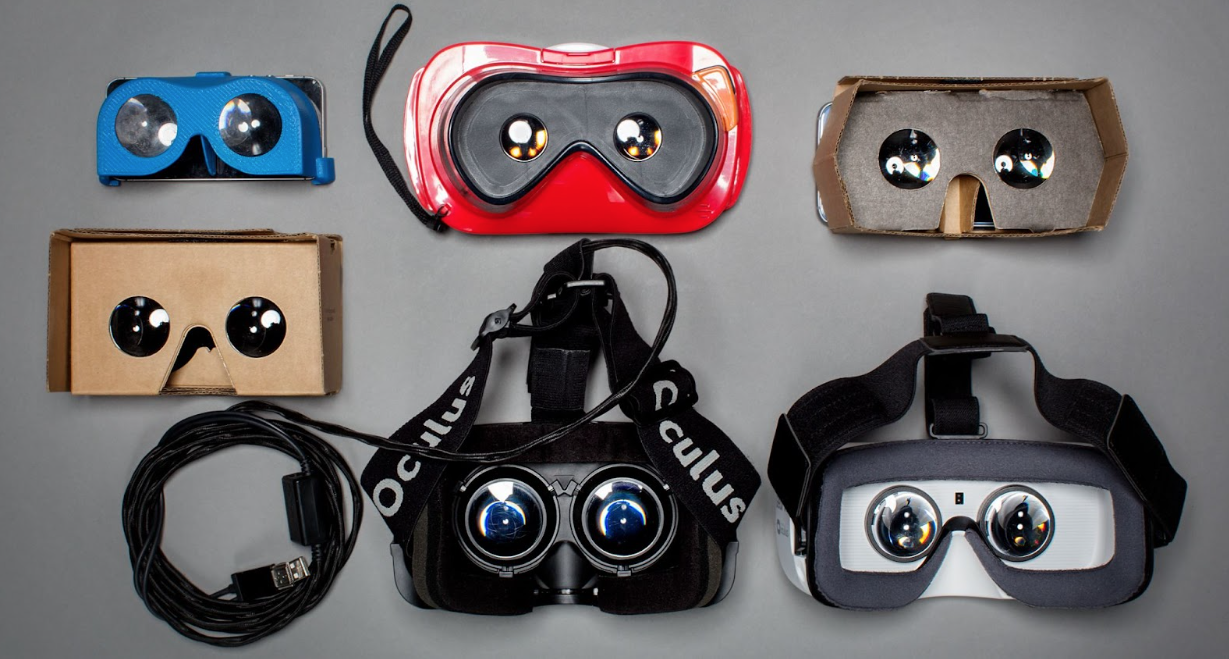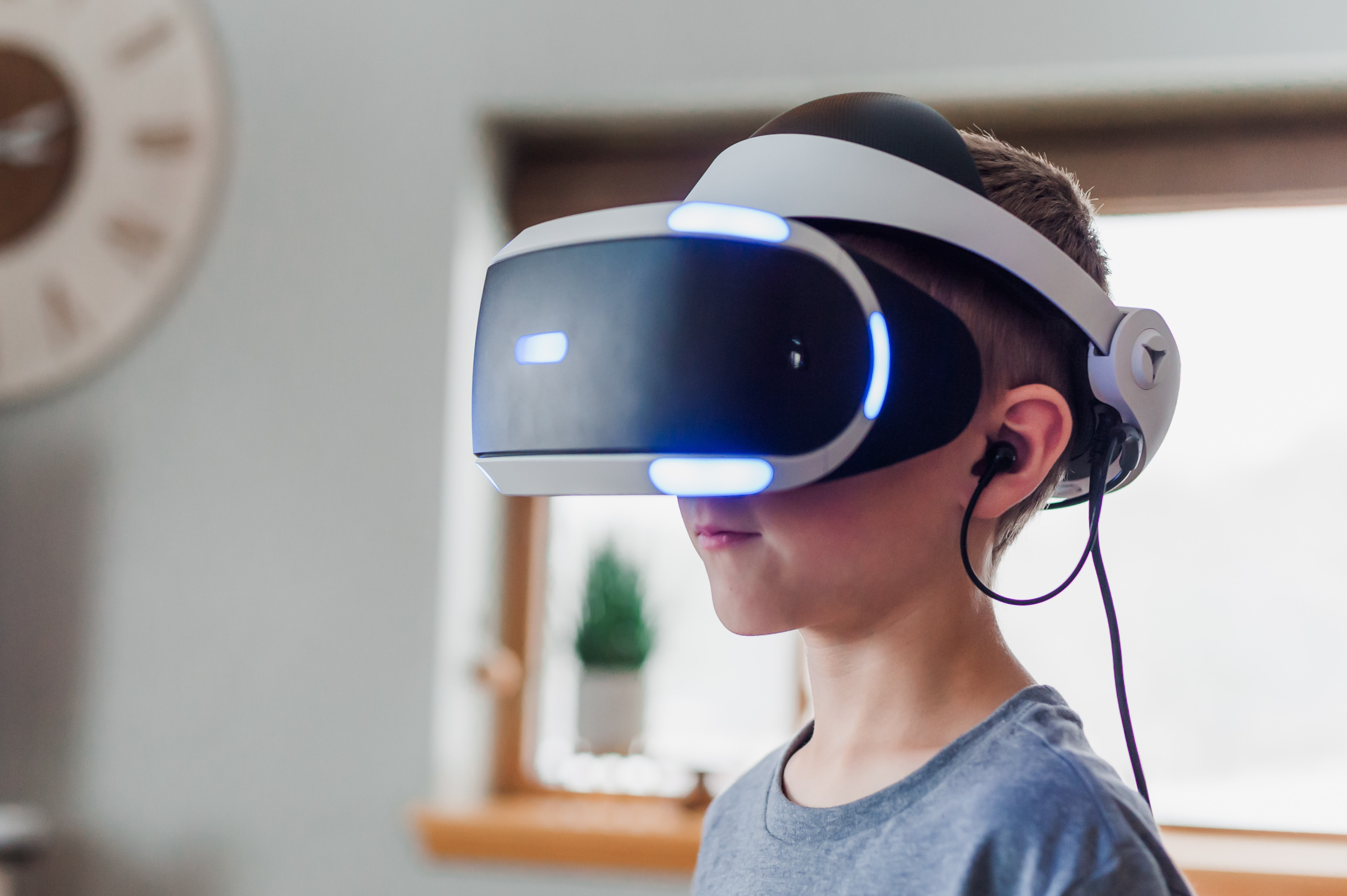What is virtual reality? Definition, Examples and Uses
When it comes to virtual reality (VR), we think about our pensions in the fictional fiction films as "Minority Report". Without the embargo, it is...
Tonic3 develops and executes strategies that drive profit through Digital Transformation. Practically that means we are built to help clients hone the right strategy, implement the right technology, and build the right long-term capabilities to deliver lasting transformation.
Industries
We believe that effective technology helps people succeed in their daily lives. So we help our clients engineer useful technology for their clients, partners, and employees. That translates to every major industry, but over the years we’ve developed several core areas of expertise.

The Technology of Oil and Gas
The use of augmented reality (AR) and virtual reality (VR) in the oil and gas industry continues to grow as companies explore use cases and move beyond pilot applications. These efforts intersect with opportunities made possible by technology, such as sensors and connected devices that help build a more integrated and expansive digital and physical landscape. Yet, amid this flurry of increased activity, many overlook the potential of AR and VR within the oil and gas industry.
Designs are already evolving dramatically. Basic 2D screens have given way to tools that use sensors, gestures, voice recognition, motion capture, and digital content to help humans interact more naturally with the increasingly intelligent world around us. By embracing new technologies, the oil and gas industry will be able to overcome numerous challenges and be more efficient than ever. And that’s just the tip of the iceberg.
Understanding the Oil Industry
The oil and gas industry has always faced enormous and varied risks concerning safety, politics, regulations, fluctuating markets, and physically challenging environments—just to name a few. Today, however, the challenges they face are more complex than ever.
The price collapse and volatility of the past few years have ushered in a new normal characterized by caution. To unlock value under these conditions, companies have attempted to emphasize efficiency, a goal that depends on highly skilled individuals. However, the industry is undergoing an employment change, with large numbers of older employees retiring. As a result, what’s demanded of the dwindling ranks of experienced personnel is escalating, and companies are struggling to leverage their expertise.
On top of this, the pace of operational change across the industry has dramatically accelerated. Unlike in the past, when upstream assets were viewed through a time horizon of 10, 20, or even 30 years, shale technology has compressed turnaround times to mere months or even weeks. Such strict deadlines necessitate finding solutions that don’t require workers to travel to remote locations but instead enable them to work remotely. The bottom line is that companies must now do more with less on tighter budgets, with fewer employees, and at unprecedented speeds.
The Introduction of AR/VR
Fortunately, AR and VR can aid in improving efficiency and making a smaller team with fewer resources more successful. For example, virtual training sessions in the oil and gas industry can enhance user experience while decreasing training costs. Additionally, delivering virtual reality-based, on-demand training sessions that leverage in-person walk-throughs and technology can improve knowledge retention, making them a better choice overall.
Not only can VR and AR be more budget-friendly and educational but more efficient and safer too. Highly realistic oil and gas VR training for risky situations can better test safety and compliance protocols and improve procedural execution in the event of an emergency.
In the field, augmented reality (AR) overlays (e.g., smart glass hardware, analytics, back-office tools) in the oil and gas industry can improve worker safety and effectiveness by providing visual clues and indicators, process steps, and repair and operation instructions. For example, gesture-control armbands can be used to initiate a video call between an on-site worker and a remote expert who will be able to see what the worker sees, talk them through a set of tasks, and send annotated instructions to the worker's augmented display for them to view. In turn, with a head nod or tilt, the worker can maintain a digital log or "checklist" of completed activities and create new notations simply by speaking as the repair is being made. During this process, best practices are stored, maintained, and implemented globally for training and educational purposes.
Why AR/VR Is the Best Choice For the Oil and Gas Industry
There are many ways in which AR and VR have been used in the oil and gas industry in the past. Below are a selection of examples that showcase the relevance and impact of these immersive technologies.
For companies in this industry, safety is a top priority. Hazards may occur at any time, so it’s critical to be able to anticipate issues before they arise and be knowledgeable about how to deal with them.
AR and VR can assist with this because it allows you to create virtual worlds in which safety risks can be carefully tested and analyzed, giving an accurate prediction of how events could play out in the real world.
For example, if there’s a problem with a piece of equipment, engineers can create a virtual replica and test out different scenarios to see how best to fix the issue before making any repairs. This can help to avoid safety problems and save time and money.
VR and AR can also be extremely helpful for training, giving employees a more realistic view of what they’ll be working with, which can help them be better prepared for the job. For example, AR can be used to show employees how to properly connect a pipe virtually, which can help them to avoid potential accidents or expensive mishaps when doing so in the field.
The true beauty of training virtually is that there are no additional travel or equipment costs and fewer safety risks. Anyone can participate from anywhere in the world and there’s no worry about damaging equipment or injury to employees.
Use Cases
The growing popularity of wearable devices, mobile phones, and tablets has led to a mushrooming of AR and VR use cases in the oil and gas industry. The combination of AR with technologies like the Internet of Things (IoT) and artificial intelligence (AI) promises to promote more comprehensive solutions that will help drive a positive digital transformation in the oil and gas sector.
To seamlessly perform activities like drilling, it’s imperative that the condition of assets be monitored regularly for health and performance. Yet, oftentimes, field technicians don’t have easy access to data about the condition of the equipment they’re assigned to maintain.
AR-based smartphone applications can provide information about deviations in key pointers like magnetic field and temperature to help employees track anomalies and equipment errors and attend to them as quickly as possible. With real-time data and predictive maintenance, the current status of the machinery is visually shown for quicker, more efficient readings, allowing field technicians to take preventative measures and avoid more costly repairs.
AR-enabled applications can be used to train and familiarize new personnel with standard procedures instead of handbooks and manuals. ExxonMobil has already launched an immersive VR-based training platform that simulates real-life scenarios like abnormalities and emergency breakdowns to test the reactions of personnel. Not only is this more engaging for the employee but it also makes for a more educational experience since the visual and hands-on aspects of AR and VR training improve retention and memory. The immersive nature of VR training simulations also leads to better decision-making and quicker turnaround times.
In the field, AR-enabled rig monitoring systems and sensor readings are extremely useful when training, operating, repairing, and maintaining any complex (or simple) equipment issue. With AR solutions, employees can effectively address technical failures by using an AR-ready device and troubleshooting the problem visually.
Not only does this cause less wear and tear on the equipment, but it also minimizes downtime, thereby decreasing costs. According to GE's report, “The Impact of Digital on Unplanned Downtime,” unplanned downtime incurs an average of $49 million in losses for offshore companies per year. Some companies may even see as much as $88 million in losses.
Field safety is of the utmost importance in the oil and gas industry, where field technicians often deal with heavy equipment, hazardous materials, and environmental risks. Therefore, rescue teams can leverage VR technology to simulate real-world events and incidents that they might face in the field.
Unlike other forms of training, VR simulations allow rescue teams to easily change the parameters of the adverse incident and gauge its impact on their rescue operations to provide a more thorough and multi-faceted understanding. This kind of VR-enabled scenario-based training acquaints rescue professionals with the site of action, facilitates better preparedness, improves response times, and ensures foolproof safety.
Augmented reality in oil and gas has transformed troubleshooting by enabling field technicians to provide real-time analyses of assets and equipment to the correct technical expert. On average, it takes around ten days for a technician to survey, report, and analyze a site. However, with AR and VR technology, the subject matter expert can guide the technician through the process of problem-solving in minutes from anywhere in the world.
AR and VR ensure that experts are within easy reach no matter the time and place while also cutting transportation costs out of the equation. For instance, GE designed a smart helmet that allows those in the field to connect with expert technicians in remote locations so they can fix malfunctioning equipment at customer sites, saving the team effort, money, and time. The expenses that would usually be incurred when waiting for an expert are also minimized, as the issues can be addressed much more quickly.
AR-enabled wearables increase a field service technician's accuracy, efficiency, and decision-making skills. A great productivity tool, wearables empower technicians to make digital checklists of regular tasks, create voice notes during repairs, and send notifications or reminders on upcoming or pending jobs.
VR training simulators also provide near-immediate access to visual instructions and standard operating procedures (SOPs) from handbooks and manuals so technicians can tackle issues preemptively. Similarly, dynamic simulators are leveraged to mimic real-life scenarios to upskill engineers who work in complex environments.
For more examples of how AR and VR can improve productivity and decision-making, check out our case studies.
VR simulation sites improve response times and solutions to adverse incidents and accidents by creating a complete visual of the impacted site for rescue personnel. These simulations also promote increased preparedness by enabling rescue teams to simulate various scenarios and plan ahead.
There’s significant value in using AR applications to improve oil field safety by efficiently relaying necessary information in real time. The pre-programmed information and directives provided by the AR-enabled system can support field operatives so jobs can be completed efficiently and safely. For example, AR headsets and smart glasses can be used to send technicians location coordinates. In the event of an emergency, an AR app could also guide field technicians to safer destinations or allow rescue teams to locate injured personnel. This helps oil and gas sites adhere to prescribed safety regulations and avoid injuries.
The Future of AR/VR in Oil and Gas
Undoubtedly, AR and VR will soon form the bedrock of industrial training. With these technologies, employees can receive hands-on e-training from anywhere in the world, enhancing their education and improving knowledge retention while also providing a risk-free environment in which to learn. Yet, VR and AR also provide benefits for the oil and gas industry by reducing costs and enabling a smaller workforce to be even more efficient.
While some valid concerns must still be addressed, such as costs and a lack of standards, the oil and gas industry is slowly but surely making the shift to AR and VR.

When it comes to virtual reality (VR), we think about our pensions in the fictional fiction films as "Minority Report". Without the embargo, it is...

Transforming Sports: Advantages of AR and VR Innovation What is AR/VR? Augmented Reality vs Virtual Reality: the two distinct but related...